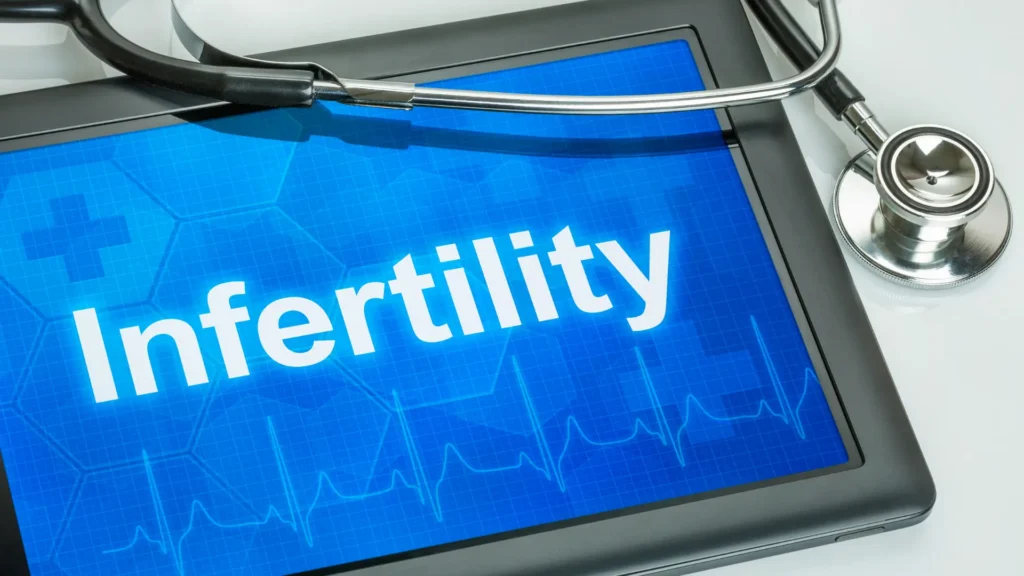The desire to have children and build a family is one of the most fundamental human aspirations. For many couples, this journey unfolds smoothly, but for others, conceiving a child can present unexpected challenges and profound emotional distress. Facing difficulties when trying to start or grow your family can be incredibly hard, often leading to feelings of frustration, sadness, and isolation.
My name is Dr. Vrushali Pillai, and as a Senior Consultant in Obstetrics & Gynaecology at Borneo Hospital, Thane (part of the Borneo group serving Thane, Nashik, Chhatrapati Sambhaji Nagar, and Raipur), my priority is always a safe and positive birth experience for every mother and baby. We understand the sensitivity surrounding fertility issues and believe that knowledge is the first step towards empowerment. This article aims to shed light on the common causes of Infertility in Men and Women, explaining potential factors in a clear, accessible way. It’s important to remember that infertility is a medical condition, not a personal failing, and it often involves factors relating to one or both partners. Seeking timely help together is a crucial step.
Understanding Infertility: The Basics
Clinically, infertility is generally defined as the inability to conceive after 12 months of regular, unprotected sexual intercourse.1 However, this timeframe is often shortened to 6 months for women aged 35 or older, as fertility naturally declines more noticeably after this age.
It’s important to know that you are not alone. Infertility is relatively common, affecting a significant number of couples in India and across the globe. The causes are diverse and can originate from female factors, male factors, a combination of both, or sometimes remain unexplained even after initial tests. Understanding the potential causes is the first step towards diagnosis and finding appropriate treatment. Roughly speaking causes breakdown as one-third female, one-third male, and one-third combined or unexplained.
Common Causes of Female Infertility
For pregnancy to occur, a woman needs to release an egg (ovulate), that egg needs to travel through an open fallopian tube, be fertilised by sperm, and the resulting embryo must implant in the uterus. Issues at any stage can lead to infertility. Common female factors include:
1. Ovulation Disorders (Problems Releasing Eggs Regularly):
This is one of the most frequent causes of female infertility.
- Polycystic Ovary Syndrome (PCOS): A common hormonal disorder, particularly prevalent among Indian women. PCOS involves hormonal imbalances that interfere with regular ovulation, often leading to irregular periods, cysts on the ovaries visible on ultrasound, and sometimes symptoms like excess hair growth or acne.
- Hypothalamic Dysfunction: The brain centres (hypothalamus and pituitary gland) release hormones (like GnRH, FSH, LH) that regulate ovulation. Factors like extreme stress, significant weight loss or gain, or excessive exercise can disrupt these signals, leading to irregular or absent ovulation.
- Premature Ovarian Insufficiency (POI): This occurs when a woman’s ovaries stop functioning normally before the age of 40, leading to reduced egg supply and ovulation issues.
- Hyperprolactinemia: Having too much prolactin (the hormone responsible for milk production) in the body can suppress the hormones needed for ovulation.
2. Damage to Fallopian Tubes (Tubal Factor Infertility):
Blocked or damaged fallopian tubes prevent the sperm from reaching the egg or stop the fertilised egg (embryo) from travelling to the uterus.
- Pelvic Inflammatory Disease (PID): This infection of the female reproductive organs is often caused by untreated sexually transmitted infections (STIs), primarily chlamydia and gonorrhoea. PID can cause scarring and blockages in the fallopian tubes, making it a major preventable cause of infertility. Practicing safe sex and seeking prompt treatment for any suspected STIs is crucial.
- Previous Pelvic Surgery: Surgeries involving the abdomen or pelvis (like for appendicitis, ovarian cysts, or previous ectopic pregnancy) can sometimes lead to adhesions (scar tissue) that damage or block the tubes.
- Endometriosis: In this condition, tissue similar to the uterine lining grows outside the uterus (on the ovaries, fallopian tubes, or other pelvic organs). This can cause inflammation, scarring, blockages, or interfere with ovulation and implantation.
3. Uterine or Cervical Causes:
Problems within the uterus or cervix can hinder implantation or the ability to carry a pregnancy.
- Uterine Fibroids or Polyps: These are common, non-cancerous growths. Depending on their size and location (especially if inside the uterine cavity), they can sometimes interfere with an embryo implanting.
- Uterine Abnormalities: Issues with the shape or structure of the uterus present from birth (congenital anomalies) can affect implantation or increase miscarriage risk.
- Cervical Issues: Previous surgery on the cervix or other conditions might lead to cervical stenosis (narrowing) or problems with the quality or quantity of cervical mucus needed to help sperm travel.
4. Age-Related Factors:
A woman is born with all the eggs she will ever have. As she ages, both the number of eggs remaining (ovarian reserve) and their quality decline. This decline becomes more noticeable after age 35 and accelerates after 40, making conception more difficult and increasing the risk of miscarriage and chromosomal abnormalities in the embryo.

Common Causes of Male Infertility
Male factors contribute significantly to Infertility in Men and Women. Issues can arise with producing healthy sperm or delivering it effectively.
1. Problems with Sperm Production or Function:
These affect the number of sperm (count), their ability to move properly (motility), or their shape (morphology).
- Varicocele: This is a swelling of the veins that drain the testicle, similar to a varicose vein in the leg. It’s a very common cause of male infertility. The increased heat associated with varicoceles can potentially impair sperm production and quality.
- Hormonal Imbalances: Problems with hormones produced by the pituitary gland, hypothalamus, or the testicles themselves can disrupt sperm production.
- Genetic Conditions: Certain genetic disorders, like Klinefelter syndrome or small deletions on the Y chromosome, can cause severely low sperm count or absence of sperm.
- History of Undescended Testicles: If one or both testicles did not descend into the scrotum during infancy or childhood, sperm production might be affected later on.
- Infections: Certain past infections can impact male fertility. Mumps contracted after puberty can sometimes damage the testicles. Infections like epididymitis (inflammation of the sperm storage tube), orchitis (inflammation of the testicle), or some STIs can affect sperm production or block sperm passage.
- Certain Medications/Treatments: Cancer treatments like chemotherapy and radiation can severely damage sperm production. Some other long-term medications can also have an impact.
- Environmental Factors: Prolonged exposure to excessive heat (e.g., frequent sauna use, laptops directly on the lap for long periods, certain occupations), industrial chemicals, pesticides, or heavy metals might affect sperm quality.
- Lifestyle Factors: Smoking damages sperm DNA and reduces count/motility. Excessive alcohol intake, use of recreational drugs (especially anabolic steroids), and significant obesity can also negatively impact sperm parameters.
2. Problems with Sperm Delivery:
Sperm may be produced normally but encounter issues getting out of the body.
- Blockages: Obstructions can occur anywhere along the intricate pathway sperm travel (epididymis, vas deferens, ejaculatory ducts). Causes include infections, previous surgeries (like vasectomy or hernia repair), injury, or congenital conditions (like the absence of the vas deferens).
- Ejaculation Issues: Problems like retrograde ejaculation (where semen enters the bladder during orgasm instead of exiting the penis), premature ejaculation (less commonly a direct cause of infertility but can affect timing), or erectile dysfunction (inability to achieve or maintain an erection sufficient for intercourse).
- Structural Problems: Congenital conditions like hypospadias (where the urethral opening is not at the tip of the penis).
- Anti-sperm Antibodies: In rare cases, the immune system mistakenly identifies sperm as foreign invaders and produces antibodies that attack them, impairing their function.
Combined Factors & Unexplained Infertility
It’s important to remember:
- It Often Takes Two: In many couples experiencing infertility (perhaps 20-30%), contributing factors are found in both the male and female partners. This highlights why evaluating both individuals is essential.
- Unexplained Infertility: Sometimes, even after standard fertility tests, a clear cause isn’t immediately identified (this happens in about 10-15% of cases). This can be frustrating, but it doesn’t mean there’s no solution. It might involve subtle factors related to egg or sperm quality, fertilisation, or implantation that current tests don’t fully capture. Further investigation or empirical treatment might be considered.

Lifestyle Factors Affecting Both Men and Women
Certain lifestyle choices can impact the reproductive health of both partners:
- Age: As mentioned, significant for female fertility, also plays a role, albeit usually more gradually, in male fertility.
- Weight: Both being significantly underweight and overweight/obese can disrupt hormonal balance crucial for reproduction in both sexes. Achieving and maintaining a healthy Body Mass Index (BMI) is beneficial when trying to conceive.
- Smoking: Strongly advised to quit completely. It harms eggs, sperm, and the uterine environment.
- Alcohol: Excessive intake negatively impacts fertility. Moderation or avoidance is best when trying for a baby.
- Stress: While everyday stress is unlikely the sole cause, chronic, severe stress can potentially interfere with reproductive hormones. Finding healthy ways to manage stress is always beneficial.
- Environmental Exposures: Awareness of potential toxins in the workplace or environment.
When to Seek Help & The Importance of Evaluation
If you are struggling to conceive, knowing when to seek professional help is important:
- General Guideline: Consult a doctor if you haven’t conceived after 12 months of regular (every 2-3 days) unprotected intercourse.
- Seek Help Sooner (after 6 months) If: The woman is 35 years or older.
- Seek Help Even Sooner If: You have known risk factors, such as very irregular or absent periods, a diagnosis of PCOS or endometriosis, a history of pelvic infections or surgeries, known male factor issues (like previous testicular surgery), or if either partner has had cancer treatment.
- Evaluate Both Partners: Crucially, infertility is a couple’s issue. It is essential that both partners undergo evaluation from the beginning. Assuming the ‘problem’ lies with only one partner is incorrect and can lead to unnecessary delays and distress. At Borneo Hospital, we offer comprehensive fertility assessments for couples.
Understanding the potential causes of Infertility in Men and Women is the first vital step towards finding solutions. The reasons can be diverse, involving factors related to ovulation, sperm health, the pathway for egg and sperm to meet (fallopian tubes), the uterine environment, hormonal balance, genetics, age, and overall lifestyle.
The good news is that with advancements in medical science, many causes of infertility are now diagnosable and treatable. Identifying the underlying issue allows healthcare professionals to recommend appropriate interventions, which might range from lifestyle changes and medications to surgical procedures or assisted reproductive technologies like IUI or IVF.
If you are facing challenges in conceiving, please don’t suffer in silence or feel stigmatised. Seeking timely medical evaluation and support is a proactive step. At Borneo Hospital, our dedicated teams are here to provide compassionate, expert care, offering comprehensive diagnostic services and personalised treatment options to help you on your journey towards parenthood. Understanding the causes is the beginning of finding hope.



